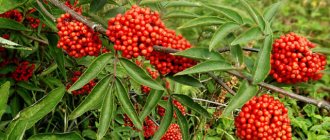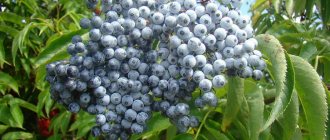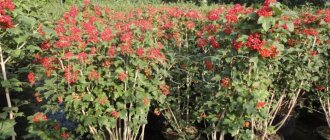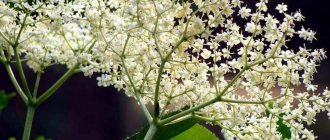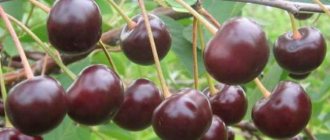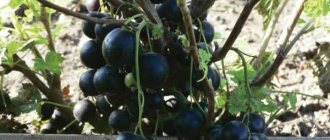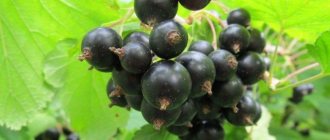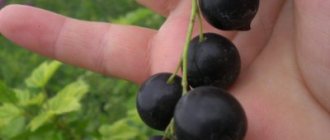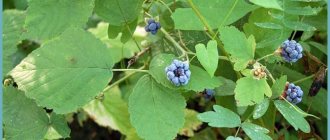The deciduous elderberry shrub, or sambucus, has about 40 species, but no more than 10 of them take root in the climate of the middle zone. Let's find out how they differ and what varieties you should pay attention to when choosing a plant for your summer cottage.
Only 3 types of elderberry are common in gardens: red, black and Canadian. They all prefer fertile and moist soils. Plants can withstand partial shade, but develop well only in a sunny area. Elderberry tolerates pruning well, which is why it is popular in landscape design. In addition, at present there are many forms with openwork leaves of various colors and lush inflorescences.
Black elderberry: description of the plant
Elderberry belongs to the Adoxaceae family, with a variety of varieties and species. A shrub, or less commonly a bushy tree, reaches a height of one and a half to four meters. The shoots of the plant are branched, with good survival rate. The foliage of the elderberry bush is oblong in shape, medium length, opposite. The bark of the plant is gray and smooth.
Flowering occurs in late spring and lasts about a week. Inflorescences of milky and yellow shades. The fruits of the elderberry are, of course, berries, but it is worth remembering that only the fruits of the black elderberry are suitable for food.
Black elderberry is used for medicinal purposes. Black elderberry berries are suitable for harvesting only in the phase of full ripeness, when they acquire a blueberry hue. The taste of elderberry fruits is sweet and sour, juicy. The berry is round in shape, half a centimeter in diameter and weighing less than a gram. One black elderberry bush can produce about two kilograms of berries.
The culture is not capricious, grows quietly in the shade, loves to settle along river banks and in forests. The root system of the elderberry will not allow it to survive drought, even short-term, the roots of the plant do not lie deep and the shrub needs constant moisture.
The plant is heat-loving, rarely attacked by insects and extremely rarely exposed to diseases, but is vulnerable to the summer heat and can simply burn in the sun.
Black elderberry berries are used as a recipe ingredient in preserves, jams, the alcohol industry, in infusions and teas. But it is worth remembering that only ripe berries of garden crops will not cause harm; the wild plant is highly toxic and its fruits are dangerous to humans.
Medicinal properties
You learned from the photos above what an elderberry looks like. Now we need to talk about the beneficial properties of the plant. The culture contains a large amount of carbohydrates, essential oils, fatty acids and other microelements. The berries are rich in vitamin C, the flowers are rich in essential oils and acids, the leaves are rich in carotenes and resinous substances, the bark is rich in sugar and tannins.
Only black elderberry is used in medicine, a description and photo of which you can find in our article. The juice obtained from fresh fruits is used in the treatment of constipation and varicose veins. Berry decoctions should be taken by people suffering from hepatitis, diabetes, pancreatitis and obesity. Seed oil helps lower body temperature.
Cosmetologists recommend rinsing your face with an infusion of flowers if you have dry skin. If you add rose leaves to the product, it will suit people with any skin type. To give the skin elasticity and prevent inflammatory processes, use berry tincture. For general tone, you can take baths with a decoction of flowers.
Beneficial properties of black elderberry
Since ancient times, black elderberry has been considered a medicinal plant, but the berries were rarely consumed for table purposes, considering them dangerous. Due to the abundant presence of hydrocyanic acid in the leaves and berries of elderberry, consumption in excessive quantities can be destructive, therefore, only ripe black elderberry berries are suitable for consumption and are often used only for medicinal purposes.
Homeopaths and herbalists use crushed black elderberry raw materials for brewing and obtaining healing mixtures and infusions.
Black elderberries are used for gastrointestinal disorders, gallbladder diseases, as an antibacterial and choleretic agent, in the fight against urolithiasis, urinary tract diseases, acute respiratory viral infections and acute respiratory infections. Decoctions of elderberry leaves have antiseptic and anti-inflammatory effects. Elderberry bark decoction treats gout and skin diseases.
Black elderberry leaves are included in kidney preparations and help in the treatment of cystitis and urethritis.
Without a doubt, black elderberry is a very useful plant, but treatment should only be carried out under the supervision of an experienced homeopath, since there is a risk of complications when using elderberry, in addition, black and red elderberry berries are easily confused, and the use of the latter will lead to death.
Elderberry rhizomes contain quite a lot of saponins, and when used judiciously, the prepared decoction has an expectorant and thinning effect (therefore, it is indispensable for diseases of the upper respiratory tract).
In addition, plant materials also have a sedative effect, normalizing the condition after nervous breakdowns.
The carotene content in the inflorescences allows infusions and decoctions of black elderberry flowers to have an antioxidant and tonic effect on the body.
The fruits of black elderberry and their moderate consumption increase immunity and create a powerful anti-inflammatory barrier in the body. Anthocyanins and tyrosine contained in the juice of black elderberries stimulate the production of melanin in the body.
The bark and foliage of black elderberry has a hemostatic and wound-healing effect when brewed.
Elderberry can become a guardian of garden plants; thanks to its phytoncidal properties, the bush repels pests. Elderberry branches contain essential oils, acids and resins that have a laxative effect for constipation.
In Rus', elderberry tincture reduced pigment spots and got rid of scars, and girls wiped their faces with elderberry decoction to preserve youth.
Pest Control
Infestation of a shrub by pests can be detected by the characteristic curling of the leaves. This is usually an aphid or spider mite. Other pests are also known: the tailed moth, the elderberry leaf miner, and the leaf mite. At the first signs of damage, the entire plant should be treated with a suitable insecticide; it is important not to waste time. Voloton, karbofos, fufanon are suitable for this.
Supporters of natural methods of struggle can try to save the situation with an infusion of red pepper or onion skins.
Growing black elderberry: planting and care
Planting elderberry does not require enormous efforts to grow it. The seedlings take root easily and require painstaking care, the only exception being frequent watering.
The best for planting are seedlings older than one year, with a well-developed root system. The planting site should be selected based on the needs of the plant; the area should be illuminated, but with variable solar activity.
The soil for the rapid development of the elderberry root system should be turfy or loamy, not acidic. Elderberry is an excellent guardian of other plants on the site. Therefore, if you want to get rid of insects on your site, then feel free to acquire several elderberry bushes. And thanks to modern selection, you can give preference to varieties for decorative purposes, and not only protect the site, but also decorate it.
Acidic soils require the addition of dolomite flour before planting elderberries, and on heavy soils sand and peat are added at the rate of half a bucket per square meter of land.
Video
How to take cuttings from black elderberry.
Black elderberry. Trimming.
Landing instructions.
- Coniferous yew: instructions for planting and care in open ground
- Ranunculus - planting and care in open ground
- The best varieties of peonies for the Moscow region with photos and descriptions
- Elderberry: photo and description of the bush
- Pitahaya or dragon fruit: growing at home
- Ornamental cabbage: types, varieties, breeding features
- How to treat strawberries against diseases and pests in the fall
- How to sow green manure in the fall and which ones are more effective
Planting elderberry
To plant elderberry, you need to dig a small planting hole, half a meter deep and 45 cm wide is enough. In order for the bush to develop quickly, the excavated soil should be mixed with peat and superphosphate during planting, and rotted organic matter can be added if desired.
If the plant is intended to be grown as a tree, then a peg should be driven into the planting hole to further support the tree during the process of growth and development.
If you do not want the overgrown elderberry to turn into annoying shoots and fill the garden, then you should dig slate around the perimeter of the hole for the seedling (at a distance of about 60 cm).
A bucket of water is poured into the planting hole and part of the soil substrate mixed with fertilizers is added (depending on the length of the seedling, this can be half or a third of the soil mixture).
Holding the elderberry seedling slightly above the base, press it tightly to the soil and cover it with the remaining soil. After planting, the soil is compacted and watered abundantly.
Now it’s red elderberry’s turn
Red elderberry Plumosa Aurea Sambucus racemosa plumosa aurea photo
This plant is completely ornamental. It comes from the slopes of Western European mountains. It can be grown as a 5-meter tree, or as a shrub. The crown shape is hemispherical, slightly elongated. The leaves of the red elderberry are light green, about 15 cm in length, collected from 5 or 7 thin serrated leaves. In spring, young leaves may have a purple or red tint.
Popular names can be heard: elderberry, shankweed, pischalnik. The Latin name for the species racemosa is racemosa, which comes from the similarity of the shape of the red elderberry racemosa with the grape racemosa. The inflorescences are collected in a panicle of greenish-white small flowers with an unpleasant odor. The fruits are bright red berries, not poisonous, but considered inedible.
Red elderberry Sutherland Gold Sambucus Racemosa Sutherland Gold photo
Ripe berries do not fall from the tree for a long time, which gives it an elegant look. Varieties:
- low;
- purple - has bright pink or scarlet flowers;
- pinnate - young leaves are cut along the edges and have a purple tint. You can find the Plumosa Aurea variety, whose distinctive feature is yellow lacy foliage, as well as Sutherland Gold with golden foliage;
- yellowish because the berries are yellow and one side is orange;
- thin-leaved - the leaf consists of very thin parts, young leaves have a burgundy tint.
Let us give more examples of decorative forms of elderberry.
Caring for elderberry seedlings
Caring for a young elderberry seedling involves watering it regularly and protecting it from direct sunlight and disease. For this purpose, moisturizing is carried out at least four times a week. Treating the lower branches and soil around with slaked lime will protect the plant from ants and aphids; you can also scatter ash near the bush.
Spraying elderberry branches with Bordeaux mixture is carried out only in case of attacks on the bush by pests.
It is better to shade a young bush in the afternoon by stretching a nylon net over it or shading the planting site with another larger plant, so when planting you should take into account the young elderberry bush’s fear of the scorching sun.
The plant will not need pruning in the first year of its life.
Feeding can be done once every two months to speed up the growth and development of the bush. Loosening and weeding in the first year of the plant's growing season are carried out as needed.
Diseases and pests
Elderberry is a plant resistant to pests and diseases. Sometimes the tops of a bush can be affected by aphids; spider mites are even less common. To prevent this situation, in the spring the bush is treated with a solution of Nitrafen (it is prepared exactly according to the instructions) or Bordeaux mixture. If aphids have already appeared, then it is very difficult to fight them, which is why prevention is so important. To get rid of this pest, soap solutions, herbal infusions (for example, onion or garlic) and products based on birch tar are recommended, but they are used only if the berries have already been collected.
Aphid
Watering elderberry
During the active formation of the bush and fruiting, meticulous gardeners loosen the soil under the bush more than 4 times a month, and water it three times a week. However, following the advice of agronomists, elderberry on fertile soil, even in the rainy season, does not need additional moisture at all and develops and bears fruit well with one-time weekly watering.
To reduce the number of waterings and during dry periods, after abundant watering, the bush can be mulched, thus retaining moisture for a longer period.
Top dressing for elderberry
On nutritious soil and with a good supply of organic matter during planting in the first year, you can forget about fertilizing. However, poor loams and sandy loam soils require additional enrichment with nutrients. Therefore, feeding the elderberry bush will be necessary. Otherwise, the plant will become thinner, become smaller and stop bearing fruit.
To avoid the above consequences, apply phosphorus-potassium fertilizers during flowering of the elderberry, and during fruit set, perform root feeding with organic matter: this can be scattered mullein (which, with watering, will deliver the necessary microelements to the soil) or compost from chicken droppings.
Summer care
As soon as the flowering period ends, it is necessary to treat the bush from powdery mildew and pests. In summer, it is necessary to provide the plant with nutrition and moisture, since it is at this time that the ovaries form. Gardeners advise regularly loosening and watering the soil. The root shoots are destroyed because they begin to grow very intensively. Large pieces of old slate are dug into the soil around the bush to prevent the elderberry from growing.
The berry, photos of which can be found in special publications, ripens in August-September. Therefore, you need to prepare in advance for harvesting. In addition, in the summer they take measures to prepare the bush for winter. For example, if the warm season turns out to be rainy, then the mulch is removed from under the plant, and the tops of the shoots are pinched.
Reproduction of elderberry by seeds, cuttings, layering and dividing the bush
Elderberry propagation is carried out vegetatively and by seeds. Seed propagation is complicated by collecting seeds (seeds have to be extracted from the berries by grinding) and does not convey the varietal characteristics of the mother bush.
The future bush, when propagated by replacement methods, becomes smaller, so this method is of little use, and you will not be able to get a good harvest of berries from the bush. Still, if seed material is available, it is sown in fertilized soil in the fall, to a depth of about 3 cm.
Propagation of elderberry by cuttings begins with the preparation of cuttings. In summer, strong branches about 15 cm long, with several internodes and leaves are selected, cut, leaving four to five segments, and the material is rooted in wet sand mixed with peat.
Sections that will take root are pre-treated with a special agent for better root development.
The planted cuttings are kept in greenhouse conditions all winter and are well moistened, and next fall the cuttings can be safely planted on the site.
Elderberry propagation by layering is one of the most common methods. To obtain a new elderberry bush, one of the lower shoots is removed from the mother plant and pressed to the ground, and then covered with soil.
For better rooting, once a month the cuttings are watered with compost or liquid mineral fertilizers. A year later, after the diversion procedure has been carried out, the new plant is separated from the mother bush and transplanted to a new location.
Dividing the bush is the simplest method of propagation; the old elderberry bush is dug up, divided into several equal parts and planted in prepared planting holes.
Proper pruning of bushes
Sanitary pruning of elderberry takes place in spring and autumn. Once every 5 or 6 years, the main branches of the bush are cut off almost to the ground. After this, the plant quickly recovers, and new shoots quickly grow in place of the cut branches.
How to prune black elderberry correctly:
- In spring, sanitary pruning is usually carried out to remove broken and dry shoots.
- In harsh winters, the elderberry tree can freeze very much; in this case, it is recommended to prune the bush at the root.
- Once every 4-5 years, it is recommended to trim the main branches of the elderberry, leaving only a quarter of them.
- Pruning is especially necessary for mature fruit-bearing bushes; the plant quickly recovers, renewing itself naturally.
Varieties and types of elderberry
The variety of elderberry species is great and numbers about a dozen specimens. The most common ones are:
The Siberian species of elderberry, a bushy, medium-sized plant, not susceptible to cold, grows in the Siberian expanses and the Far East.
Canadian elderberry, a low-growing shrub, grows in the latitudes of North America, is considered an ornamental species, blooms profusely with large inflorescences, has yellowish branches and is suitable for growing in southern and central Russia.
Blue elderberry is a decorative species. A tall tree-like plant, with branching shoots, with light gray bark, sometimes with a burgundy tint. The tree tolerates cold weather capriciously.
Flowering begins in May; it blooms, as befits all ornamental plants, very beautifully, with large, fragrant inflorescences of a milky cream color.
The herbaceous elderberry grows in the European part of the continent and the Caucasus. The plant blooms profusely, but has a specific aroma that not everyone likes. It can become an excellent guardian of a garden or vegetable garden, repelling harmful insects with its aroma.
Elderberry black or tree-like, another common species of the Adoxaceae family, is found in wild and cultivated forms.
A shrub or tree-like plant, it blooms beautifully and profusely with yellow or milky large inflorescences; the berries, when fully ripe, are consumed for table purposes and used to make jam and elderberry wine.
Elderberry by Philipp Siebold. It was discovered by scientist-researcher Philip Siebold in Japan, which is considered the birthplace of the plant. A medium-sized spreading bush, similar in botanical characteristics to red elderberry, but more fluffy and tall.
Blooms profusely and is used in landscape design.
Red elderberry racemose. Western Europe is considered the birthplace of origin. A tall plant, tree-like, reaches a height of about 4 - 6 meters. It has paired, feathery foliage, blooms from May to June, with yellowish flowers with a specific aroma.
It is used in landscape design, will become a good guardian of the garden, protects the territory from ants, flies, midges and horse flies. The red elderberry species is toxic and the berries can be harmful to health, with fatal consequences. There are dwarf varieties of the plant that are purple and yellow in color and are used for decorative purposes.
Botanical description
Most of the representatives of the genus are small trees or shrubs, but there are also perennial herbs in the genus, for example, herbaceous elder. In the middle zone, 13 types of elderberry are cultivated, and the most common plant is the black elderberry, a description of which we bring to your attention.
Like most species in the genus, black elderberry is a shrub or small tree 2 to 6 m high, growing in the undergrowth of deciduous and coniferous forests, sometimes forming entire thickets. Elderberry stems are branched, with a thin woody shell and a porous, soft white core. Young elderberry branches are green, but over time they become brownish-gray with a large number of small lenticels. Elderberry leaves are large, from 10 to 30 cm long, imparipinnate, consisting of several oblong, long-pointed leaves on short petioles, located oppositely.
Fragrant elderberry flowers of a cream or dirty yellow hue, 5-8 mm in diameter, are collected in large multi-flowered corymbose flat inflorescences up to 25 cm in diameter. Elderberry inflorescences appear in May or June. Elderberry fruits are almost black berry-shaped drupes up to 7 mm in diameter with dark red flesh and 2-4 seeds. Fruiting begins in August or September.
- Arbutus: features of cultivation and care in the garden
Elderberry is in demand not only in amateur gardening, but also in folk medicine, so we will tell you how to grow this shrub in your garden, and describe the medicinal properties of elderberry and contraindications that you should know about.
